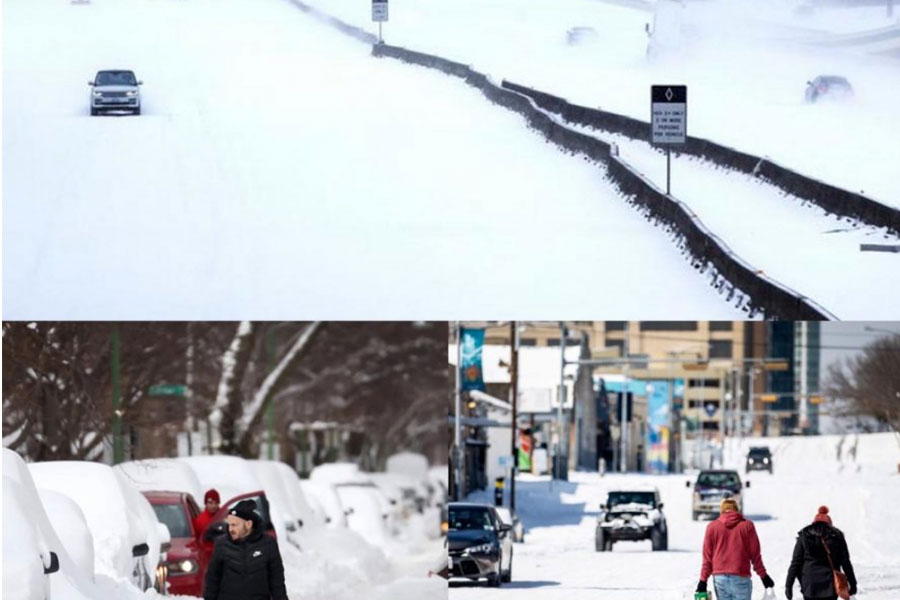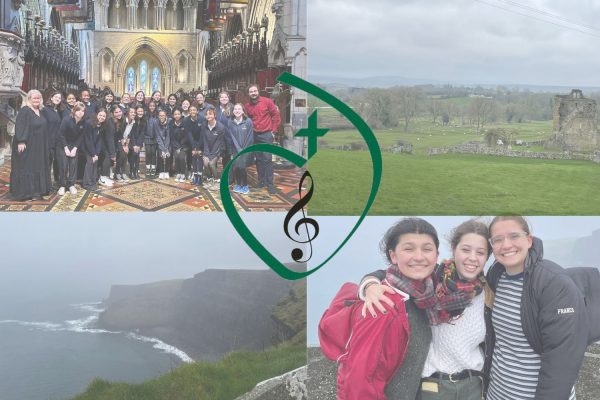Winter Storm Uri’s damage lingering impact on Texas
Winter Storm Uri impacted the state of Texas, including Duchesne Academy of the Sacred Heart.
Areas of Texas remain in critical condition due to the unprecedented snowstorms that began February 13. Winter Storm Uri forced citizens to live without power and heat for days, leading to a widespread strain on resources and a severe impact on the homeless community. Brooke Blanton, a junior at Duchesne Academy of the Sacred Heart, a network school located in Houston, Texas, experienced firsthand the adverse effects of the storm.
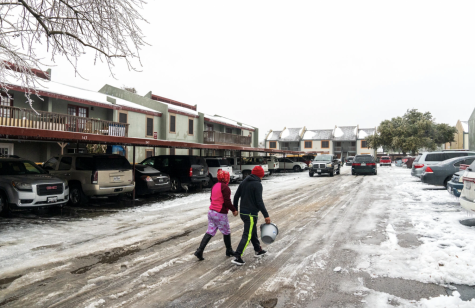
Winter Storm Uri left behind economic destruction and property damage. The storm’s temperatures were the lowest recorded in the United States’ southern region in over 30 years, falling to -3 degrees Fahrenheit in some areas of Texas. In Houston, the temperature dropped to 13 degrees Fahrenheit, the coldest temperature since 1989, according to weather.com. Uri was also accompanied by dangerously low wind chills, forcing Texans to take precautions before going outside.
Nearly three million households lost electricity and still remain with a low water supply, resulting in a statewide struggle to maintain power and heat. Cities issued boil notices asking residents to boil tap water for cooking, drinking, and brushing teeth, according to texastribune.org. Damaged buildings, collapsed ceilings, and broken furniture and household items remain as evidence of the storm’s vast destruction. Many families do not have the funds or insurance to pay for repairs. However, Houston Mayor Sylvester Turner is raising money to assist victims of the storm, according to CNN.
Many Texans took safety precautions to ensure the protection of their homes, as well as their health. Unfamiliarity with the storm’s conditions induced panic, causing citizens to be cautious of their water and power usage. Mr. Turner advised Texas residents to further decrease their water use in order to conserve the remaining water supply for hospitals and fires.
“Water pressure is very low,” Mr. Turner said, according to texastribune.org. “Please do not run water to keep pipes from bursting. Turn off water if pipes have burst. Please contact us if you don’t know how to turn off water. Be conservative on water usage today. It is needed for hospitals and fires.”
Governor Greg Abbott and other state leaders are still working to find efficient solutions for Texas residents who are dealing with electricity bills after the loss of power. However, numerous citizens have criticized state officials and are looking to hold someone responsible for the storm’s aftermath. President Joe Biden visited Houston February 26, assuring its inhabitants of federal aid to accelerate the recovery process, according to The New York Times.
Due to the unusual and unprecedented nature of the weather conditions, public panic ensued, causing water and heat resources to run out rapidly. Fifty-one people died in the Houston area as a result of the cold temperatures, icy roads, and power outages. Incidents such as house fires also resulted in the deaths of families trying to stay warm, according to houstonchronicle.com.
As of 2020, approximately 25,848 homeless people resided in Texas, according to usich.gov. Those who lacked housing during the storm were especially impacted, with at least six deaths within the homeless community. The storm not only affected homeless individuals, but also struck shelters with burst pipes and a lack of resources, according to texastribune.org. As the Texas homeless population now has limited options for food and warmth, several organizations have sought to help the community by offering rides to warming shelters, according to theguardian.com.
Brooke described how the severity of the weather damaged her household and community, just one example of the storm’s widespread impact.
“My power was out from Monday night to Wednesday night,” Brooke said. “Most of my friends did not have power, but thankfully we were able to all go over to a friend’s house to avoid our cold homes that didn’t have power. Not having power in our homes caused them to become around 40 degrees inside, which was not very comfortable. Because of the state-wide outages, we have so far had school canceled for the entire week and are not sure if we will have more canceled school next week.”
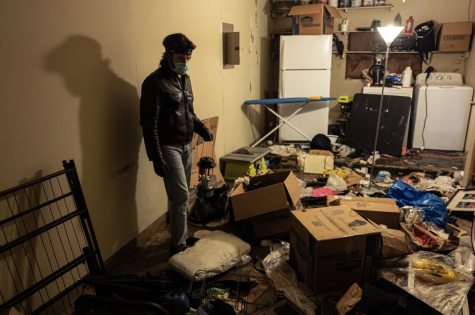
Brooke and other Duchesne Academy students encountered numerous academic setbacks, which disrupted their school schedule. However, classes have now resumed full time, with the exception of some students who opted to remain learning online. Brooke explained how her school is now back to normal and was able to fix the storm’s damage.
“We missed an entire week of school, which really set us back class-wise,” Brooke said. “So we probably will have to add extra days to this school year. Also, some pipes broke at our school, so some damage had to be repaired.”
Unlike Duchesne Academy, many schools are still struggling to recover from the storm’s effects. Schools in Texas are looking for insurance and federal emergency relief agencies to fund repairs, but this process will likely be extensive and continue for weeks. Some schools may not be able to open for the rest of the year due to weather-related damages, according to abc13.com.
Mr. Biden visited a food bank and an emergency relief center in the area to provide reassurance and show his commitment to helping Texans recover. Working on approving disaster declaration for Texas, he allocated federal resources across affected states.
“We will be true partners to help you recover,” Mr. Biden said, according to The New York Times. “We’re in for the long haul.”
Featured Image by Caterina Pye ’23
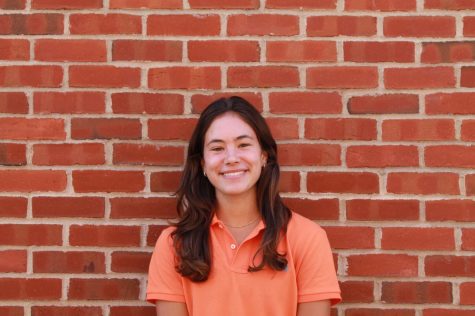
After two years of writing and editing for the King Street Chronicle, Caterina is extremely excited to return for her final year as the Managing Editor,...

